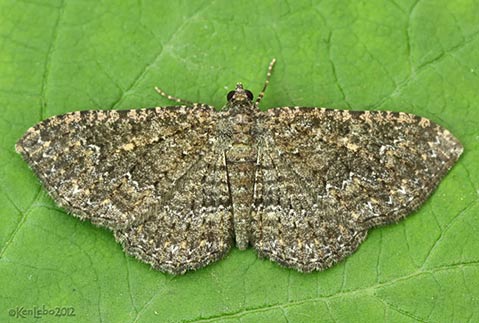Fighting Bougie Bugs
Tips for Combatting the Pesky Bougainvillea Looper, the Caterpillar Form of the Somber Carpet Moth

It used to be that bougainvilleas were easy and foolproof to grow here in Santa Barbara. It always seemed that, once established, they didn’t need food, weren’t bothered by bugs, and existed on almost no water. (I always wondered if someone sneaked into the Douglas Family Preserve at night and watered the feral ones that are tucked away overlooking Hendry’s Beach.) Bougies were a cast-iron staple in your garden that gave you an abundance of color and little grief, save for the thorns.

That all changed in 2006 when a sneaky little brown (or green) inchworm was accidentally introduced into California. The bougainvillea looper (Disclisioprocta stellata) is the caterpillar or larvae form of the somber carpet moth. They don’t live in your carpet, and with all the bougainvillea in this town to dine on, I can’t imagine what they’ve got to be somber about. Nevertheless, they’re pesky and destructive. The moth does not eat the bougainvillea but instead lays its eggs on the undersides of the leaves. The hatching inchworms are what cause the scallop-shaped, munched-on, damaged foliage.
There are a few ways to get them out of your life and off of your bougainvillea. You can spray the foliage with Bt (Bacillus thuringiensis), which is a naturally occurring bacteria that makes the bug’s guts explode after they eat it — kind of like when you have that one extra slice of pizza, but worse. Since Bt quickly breaks down in sunlight, it is best applied in the late afternoon so it is still viable into the evening when the worms are more likely to ingest it. Spray Bt weekly until the new bougainvillea growth is clean and free of damage.
Another organic-type pesticide called Spinosad can be used and also helps eliminate leaf miners and thrips. It is also the ingredient in some of the oral pesticides that we give our dogs to keep fleas at bay. One online source explains that these bacteria produce a substance that acts as a neurotoxin in some insects that causes them to become excited to the point of exhaustion, to stop eating, and die within two days. Not unlike what happened to my friend, Eugene, right before the season finale of Downton Abbey.
Although both insecticides occur naturally, they may come with some risk. There is some evidence that Spinosad may harm bees if they come in contact with it, and with constant use, caterpillars can become resistant to Bt.
If you want to be on the safe side, you can conduct a reconnaissance mission at night with a flashlight and a mayonnaise jar or hang a bird feeder nearby to encourage the birds to do their job.
Randy Arnowitz will answer your garden questions if you email them to greenjeansmr@gmail.com.



